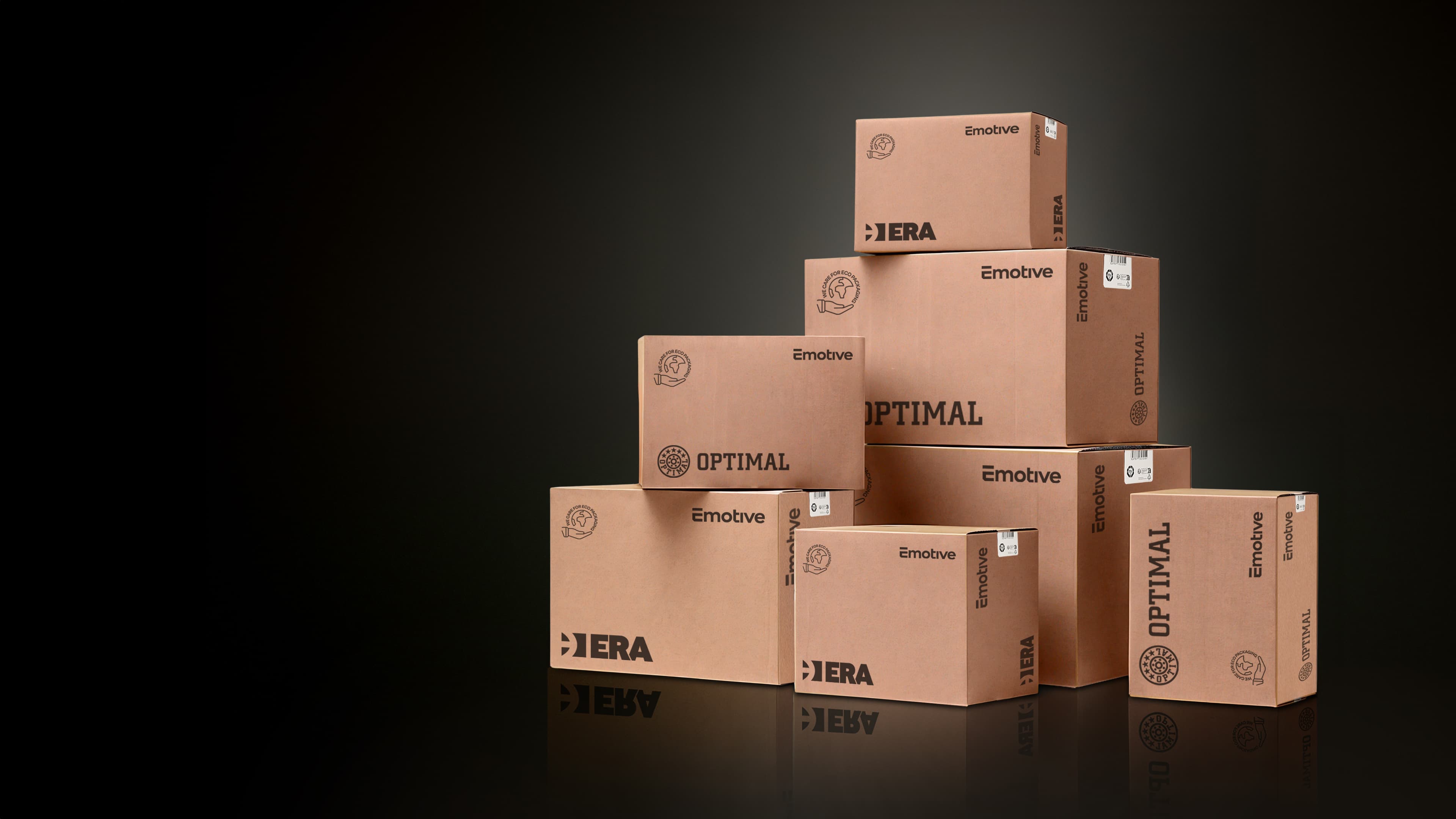
January 10, 2025
Driving Change: Emotive on the Journey Towards Sustainable Packaging
Emotive
At Emotive, sustainability is more than a commitment, it is a cornerstone of our identity. As the automotive aftermarket evolves, so do our practices, ensuring that every aspect of our operations reflects our values. Packaging, a key touchpoint in our supply chain, reflects our commitment to innovation, responsibility, and excellence. Leading the transformation are our Quality Director, Thomas Schäfer, and Packaging Management Team Lead, Daniel Fritsch, whose insights drive our focus on creating solutions that protect not only our products, but also the planet, people, and brand.
In this interview, Schäfer and Fritsch share the inspiration and strategy behind Emotive’s sustainable packaging journey. From using up to 90% recycled materials to enhancing safety and regulatory compliance, discover how Emotive is setting new standards from environmentally conscious packaging while remaining aligned with our core values.
1
Sustainability is at the central of Emotive’s mission. How does the packaging strategy contribute to environmental protection, and what are some specific practices implemented to achieve this? Schäfer: At Emotive, we have fully embraced sustainability and updated our entire packaging strategy. From design to raw material selection, every decision is made with environmental responsibility in mind. We ensure that all packaging is not only recyclable but also composed of a high percentage of recycled materials. Fritsch: To add to that, we utilize up to 90% recycled materials for boxes, we also reduce paint and bleach usage by 100% and use 86% less color in packaging design. These combined efforts collectively reduce our environmental impact and align with our commitment to sustainable practices.
2
Emotive emphasizes safety for employees and customers alike. Can you please explain how packaging design contributes to the safety and well-being of everyone involved in the supply chain?
Schäfer: Packaging serves multiple functions, with protection being paramount. Our design strategy prioritizes the safety of the goods, individuals, and the environment. By avoiding excessive weight per package and minimizing sharp corners, we facilitate easier handling and enhance safety throughout the supply chain.
Fritsch: Exactly. By designing packaging with safety in mind, we ensure that it supports not only operational efficiency but also the well-being of everyone in the supply chain. It is about making small but impactful changes that resonate throughout the process.
3
Sustainable packaging often gives people the image of carton, paper, and unstable materials that might not hold up under heavy use. Can you please share with us how the new packaging strategy of Emotive ensures that product quality and safety remain top priorities from production to delivery?
Fritsch: The appearance of our packaging might be understated, but the quality remains uncompromised. Protection is the core function, and we tailor the thickness and construction of each package based on its shape and weight of the product. This ensures that even the heaviest items are well-protected, maintaining safety and durability throughout the supply chain.
Schäfer: The focus is always on safety first. By optimizing material usage without compromising strength, we achieve the perfect balance between sustainability and functionality.
4
How does Emotive packaging reinforce the brand identity? And in what ways does the “We Care for Eco Packaging” logo support the business’ brand message?
Schäfer: Sustainability is a core value at Emotive. Our packaging strategy reflects this priority through the use of sustainable materials where possible. The introduction of the “We Care for Eco Packaging” logo symbolizes our commitment and is a visual representation of our ongoing dedication to sustainability.
Fritsch: This logo certifies that our boxes contain up to 90% recycled cardboard, our bags are made of up to 50% recycled plastic and all packaging materials are 100% recyclable. Our proactive approach ensures that we not only comply with regulations but also lead by example in promoting eco-friendly packaging solutions.
5
As customer behaviors, regulations, and technologies evolve, what role does Emotive packaging play in adapting to these changes? Can you share an example of how packaging addresses specific regulatory or customer expectations?
Schäfer: Adapting to changing regulations and customer expectations is essential, and our packaging strategy plays a significant role in this process. For instance, we aim to eliminate plastic from our packaging where feasible. However, when a humidity barrier is necessary, we ensure that the materials used contain at least 50% recycled content. This approach allows us to comply with regulations and further demonstrates our ambition to deliver a sustainable and environmentally responsible solution that aligns with our commitment to reducing our ecological footprint.
6
What are some of the biggest challenges Emotive has faced in developing this packaging strategy? And how has the team overcome them?
Fritsch: Developing this packaging strategy was a natural progression following market analysis. However, the true challenge lay in having the foresight and courage to be pioneers in implementing these changes on such scale. Our team is actively working on ways to convey the underlying philosophy and value of this approach, ensuring our customers understand the significance and our dedication to sustainable packaging.
7
What trends or challenges does Emotive anticipate for the automotive aftermarket and how is the packaging strategy preparing the business to meet them?
Fritsch: A significant challenge in the industry is the gradual increase in fees for packaging that lacks recycled content. Emotive is proactively addressing this by reducing plastic usage and prioritizing sustainable raw materials wherever possible.
Schäfer: This strategic approach ensures that we are prepared for future regulations and market demands, maintaining our commitment to environmental responsibility.